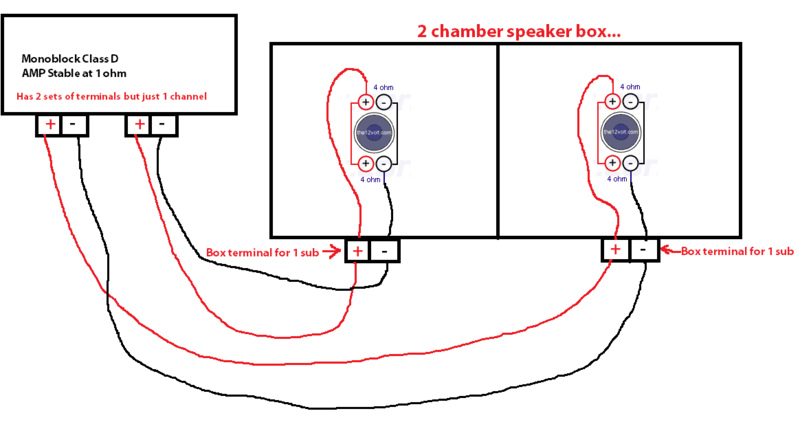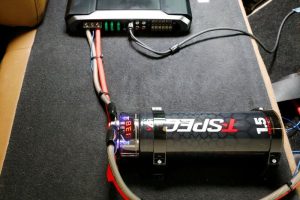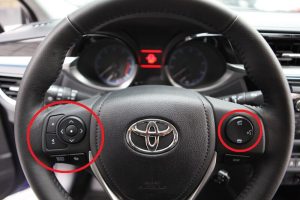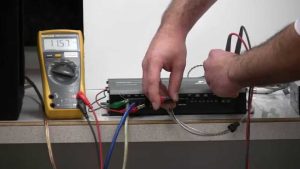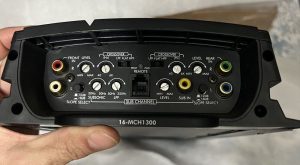When it comes to creating an impressive car stereo setup, a crucial aspect that can’t be overlooked is the subwoofer configuration. Wiring two subwoofers in separate boxes can significantly enhance your audio experience, delivering deep bass and exceptional clarity. How to wire 2 subs in separate boxes? In this guide, we’ll walk you through the process of wiring two subs in separate boxes, ensuring you achieve the best sound quality possible for your car audio system.
Contents
Choosing the Right Subwoofer Configuration:
Before diving into the wiring process, it’s important to choose the right subwoofer configuration for your car stereo setup. This involves selecting the appropriate subwoofer size, power handling, and enclosure type. To learn more about choosing the right subwoofer size, check out this informative guide on what size subwoofer is ideal for your car.
Gather the Necessary Tools
To start the wiring process, gather the necessary tools. You’ll need a wiring kit, RCA cables, a soldering iron, crimp connectors, electrical tape, and a wire stripper. Ensuring you have the right tools at your disposal will make the process smoother and more efficient.
Understanding Wiring Configurations
How to wire 2 subs in separate boxes? There are two common wiring configurations for dual subwoofers: series and parallel. In a series configuration, the subs are wired sequentially, effectively doubling the impedance. In a parallel configuration, the subs are wired to maintain the same impedance as a single sub. The choice of configuration depends on your amplifier’s capabilities and your desired setup. Always consult your subwoofer and amplifier manuals to determine the best configuration for your system.
Wiring Process
- Preparation: Begin by disconnecting your car’s battery to ensure safety. Carefully read the manuals of your subwoofers and amplifier to understand the wiring requirements and impedance specifications.
- Running Cables: Route the necessary power, ground, and remote turn-on wires from the amplifier to each subwoofer box. Make sure to secure the cables to avoid interference with other components.
- Connecting RCA Cables: Use RCA cables to connect the amplifier’s output to the subwoofers’ input. This step ensures proper signal transmission and prevents signal degradation.
- Wiring the Subwoofers:
- Series Wiring: If you’re using a series wiring configuration, connect the positive terminal of the first subwoofer to the negative terminal of the second subwoofer. Connect the remaining terminals to the amplifier, maintaining proper polarity.
- Parallel Wiring: For a parallel configuration, connect the positive terminals of both subwoofers to the amplifier’s positive output and the negative terminals to the amplifier’s negative output.
- Impedance Matching: Ensure that the final impedance of your subwoofer configuration matches your amplifier’s capabilities. Mismatched impedance can lead to poor performance and potential damage to your equipment.
- Secure Connections: Once the wiring is complete, use crimp connectors and a soldering iron to secure the connections. Wrap each connection with electrical tape to prevent short circuits.
Testing and Fine-Tuning
After wiring the subs in separate boxes, it’s time to test your setup. Reconnect your car’s battery and power on the system. Play a variety of music genres to evaluate the sound quality and adjust the amplifier settings accordingly. Fine-tuning the crossover frequency, gain, and phase settings can help achieve the optimal balance between your subwoofers and other speakers.
Can You Run 2 Subwoofers to a 1-Channel Amp?
Absolutely, it is possible to run two subwoofers using a single-channel (monoblock) amplifier. This configuration is known as “bridging” or “parallel wiring” and can offer some advantages in terms of power distribution and impedance. However, before proceeding, it’s important to understand the implications and considerations of connecting two subwoofers to a single-channel amp.
Advantages of Bridging:
- Increased Power: By connecting two subwoofers to one channel, you can effectively double the power delivered to the subs. This can result in greater bass output and improved overall sound performance.
- Efficient Power Distribution: Bridging allows the amp to allocate its power resources more efficiently between the two subwoofers, enhancing the impact of low-frequency audio.
Considerations and Limitations:
- Impedance Matching: Ensure that the combined impedance of the two subwoofers matches the minimum impedance rating of your amplifier. Running subwoofers with an impedance lower than what your amp can handle might lead to overheating or damage.
- Wiring Configuration: Subwoofers can be wired in parallel or series when bridging to a monoblock amp. Parallel wiring maintains the same impedance while series wiring doubles it. Choose the wiring configuration that aligns with your amp’s specifications.
- Amplifier Compatibility: Not all amplifiers support bridging or can handle lower impedance loads. Check your amplifier’s manual to confirm its compatibility with this setup.
- Sound Balance: Bridging can impact sound balance. Make sure to adjust gain, phase, and crossover settings appropriately to achieve the desired audio quality.
Conclusion
Wiring two subwoofers in separate boxes is a rewarding endeavor that can transform your car audio system into a powerhouse of sound. How to wire 2 subs in separate boxes? by following the proper wiring techniques and configurations, you’ll be well on your way to enjoying deep bass and impressive audio quality during every drive. Remember to consult your equipment manuals, choose the right wiring configuration, and take your time during the installation process. With patience and attention to detail, your car stereo system will provide an audio experience that’s second to none.
